I won’t start this the usual way I do, by flashbacks to my own past.
In fact, on this day, since I am feeling a bit down and depressed, a state of mind I can’t explain to myself – I am in no mood to talk about my past connection with Santanu Mitra.
Perhaps it should suffice to say that it’s been long, and deep.
Santanu remains one of the best photographers I have known, and an excellent documentary film maker; he is also a mystic, with reflective spiritual inclinations that are, however, enclosed and shaped within the analytical premise of a scientific mind.
For me, his images speak to me. They tingle my storytelling faculties.
I have spent many long afternoons staring at some of them, allowing my mind to wander off to absolutely impromptu destinations, weaving ideas around them, toying with their gray-tone ethos and reaching ridiculous lengths.
Those images have back stories. I mean, knowing Shantanu, and his unusual way of looking at things, I am sure they would have.
Especially the ‘Kali’ images that he has shown me, from time to time, for close to 20 years now. Yes, Santanu is besotted with Kali in her myriad forms.
Many of those images have stayed with me.
I decided to ask him about some of them; especially his tryst with Kali – the warrior goddess.
This composition below was the first time I got to know about his infatuation with Kali. This is also the header image of this post, but there, due to technicalities, it get’s automatically cropped, while Santanu on principle never crops his photographs. So here’s the full composite again, non-cropped.
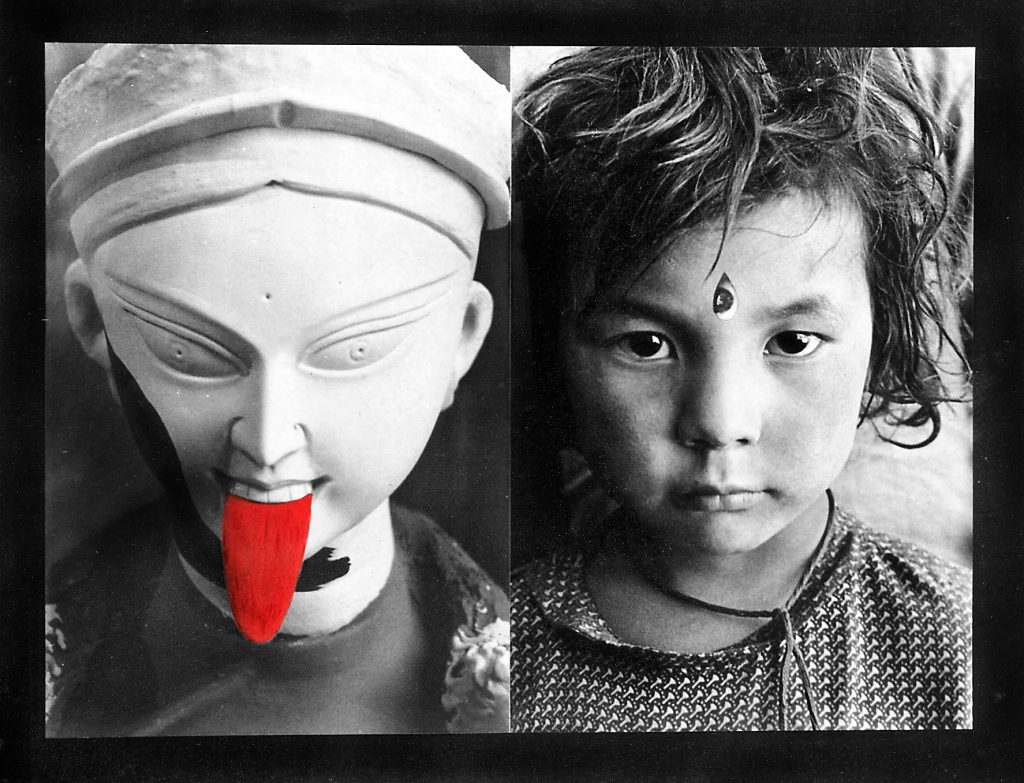
So, it’s a helpless pain consigned on him by the stark reality of the every-woman ‘situation’ in India, that led him to a quest for an alternative narrative. That got expressed through Kali – as a form of female authority and power. It’s a secret wish-come-true.
Let me add a small ‘descriptive’ anecdote to his explanation above. The third eye of the girl and the ‘red’ colour of the tongue was all the handiwork of Santanu, quite literally. That tongue is hand-painted, and that third eye pasted with glue.
In 2000, we did have Photoshop, but used it sparingly, if at all; and all ‘respectable’ photos were shot on film.
This entire cosmetic was necessary since this was an installation – with calligraphy and sculptures and floaters combined. If I remember it right, that installation was on for about a month.
Up next is ‘Bahurupi’ – a man dressed as Kali.
That’s a well established idiom of folk-culture in Bengal, where performers dress up in various ‘avatars’ and entertain their audience through their ‘acts’. They also seek alms, and the process is called ‘madhukori’.

What Santanu likes about this photograph is how it presents the juxtaposition of the whole concept of ‘image’. Here, the ‘Bahurupi’ is coming out of a studio – which deals with images. On the other hand, he is himself dressed up as Kali, subsuming the ‘image’ of the goddess.
The next three photographs represent a celebration of the woman power. They have stayed with me for such a long time that I have ceased to remember why I liked them in the first place. I think it’s due to the intense looks these girls have in their eyes; the ‘question’ in it keeps returning, from time to time.


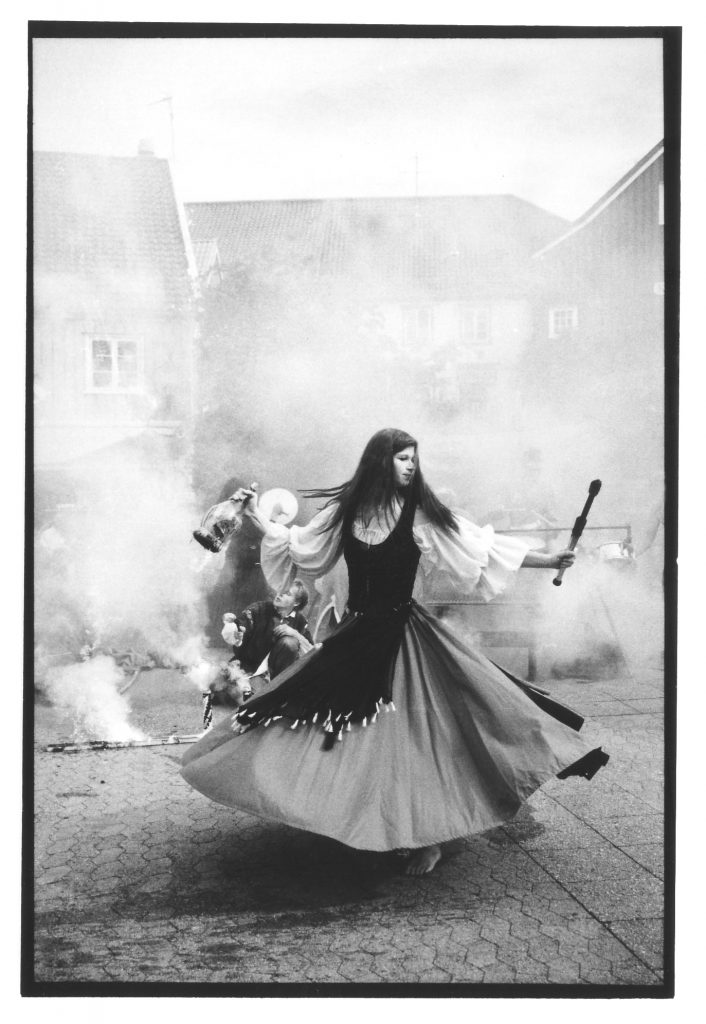
That dancing Gypsy image is also one of my personal favorites.
I love its limitless energy. Despite being held still in time, it contains echelons of movement embedded deep inside it. That’s the kind of motion-blur that enters your perception, and makes you feel dizzy and alert at the same time.
Something is about to happen there, for sure. But what could that be?

The next photograph in the series is from Kumartuli, the idol making hub of Kolkata.
It’s about, as you can see, a half done structure of a mother goddess, and a glass of tea. I got a bit confused here when Santanu shared this! Why get into the ‘Durga’ mode?
When I asked Santanu, he went into an elaborate philosophical tangent about the significance of multiple hands, ‘Dasha-Mahavidya’ and the various ‘forms’ of Kali in folk-mythos.
Hope I never need to completely decimate my enemy, but if I have to, I now know whom to approach…!!!
Santanu explains, “Hinduism is not a monolith; neither is the ‘Shakti’ cult a monolith. If you look at it with the analytical mind of a scientist, you will find that the woman power, or the perceptions of woman power as it is, has been presented in the concept of Dasha Mahavidya – in a neatly organized and variously layered manner.”
Hmm!! That’s intense, but nice to know, isn’t it?
One doesn’t really need to be ‘religious’ to appreciate these nuances of folk-culture and philosophy – I believe. But I do also think we have moved away from our thematic premise here – that of storytelling through still images.
Let’s get back there.
What do you see when you look at this image below?

For Santanu, the image stands for a question – ‘Who is creating whom?’ Is it the goddess that’s the creator of the humans, or is it the human that is creating the goddess.
Valid question – methinks!!!

Also here, a similar question, with a slight variation – ‘Who eats whom?’
There isn’t much of a chasm between physics and metaphysics here.
I have nothing else to say on that . Rather, let me tell you about Santanu’s affair with Kaali, the warrior goddess, in his own words…
That’s a happy memory – ‘drinking cheap alcohol in human skulls’. I do remember being part of one such elaborate ritual, once upon a time, at the Joydeb Mela, with Santanu.
Now I am feeling better.
That’s what I like about Santanu. He always ends up making you feel better.
I will end this photo-Iliad with a photograph simply named – Mask of the Goddess.
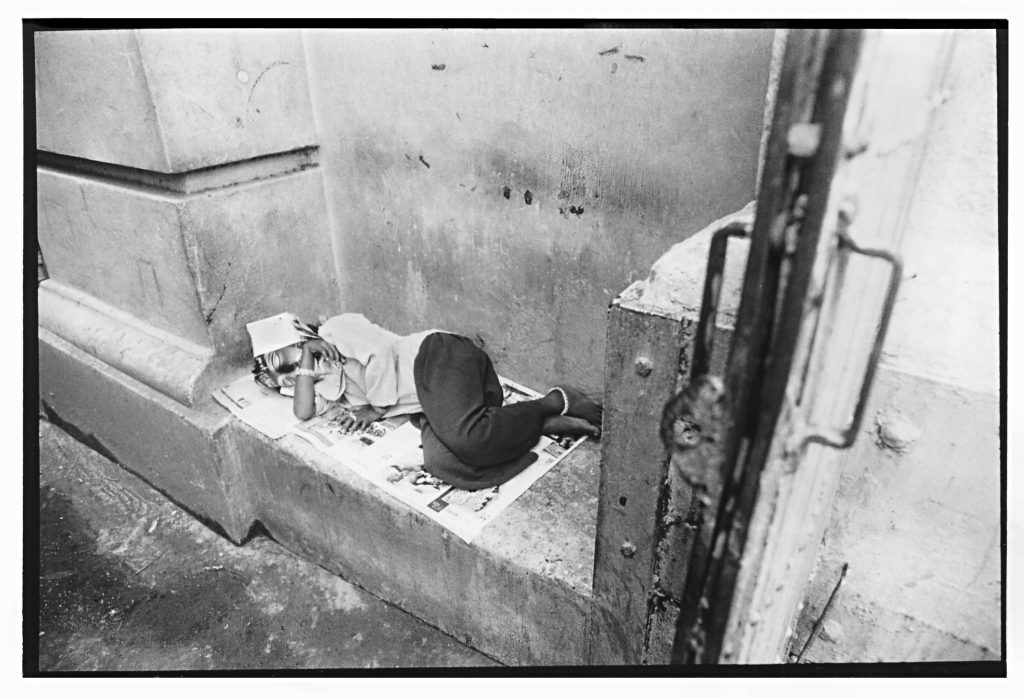
This one you might need to zoom in and look at her face.
The sleeping girl on the footpath has her face covered with a magazine – which has an image of Durga on its cover page.
Like I said, the photo is simply named Mask of the Goddess – and I think that’s a fitting conclusion to what we are trying to discuss here. This photo essay is about the myriad reflections of the inherent ‘power’ of the everyday woman – in the forms taken by the mythos of Kaali – the power woman.
And yes, besides the theme, I also wanted to make a point here.
I wanted to tell you that only some images have the power to ‘stay’ with you through times and spaces – and those are invariably images that tell the story that you ‘own’. Religion, like everything else of human origin, is a saga of fulfillment of personal aspirations, translated into community practices.
Religion is your ‘own’ story, whether you like it or not.
If we are to counter its extremist adversities and fanatic outbursts, which are merely offshoots of a larger domain of ‘wish-fulfillment’ and a philosophical quest for answers – we have to understand the ‘why’ of it all.
Avoiding a diagnosis will only intensify the ailment.
Now I am going beyond the brief. Santanu will kill me for this smart-alec-ism.
Bye for the week, and all my best wishes on Kaali Pujo. Enjoy.
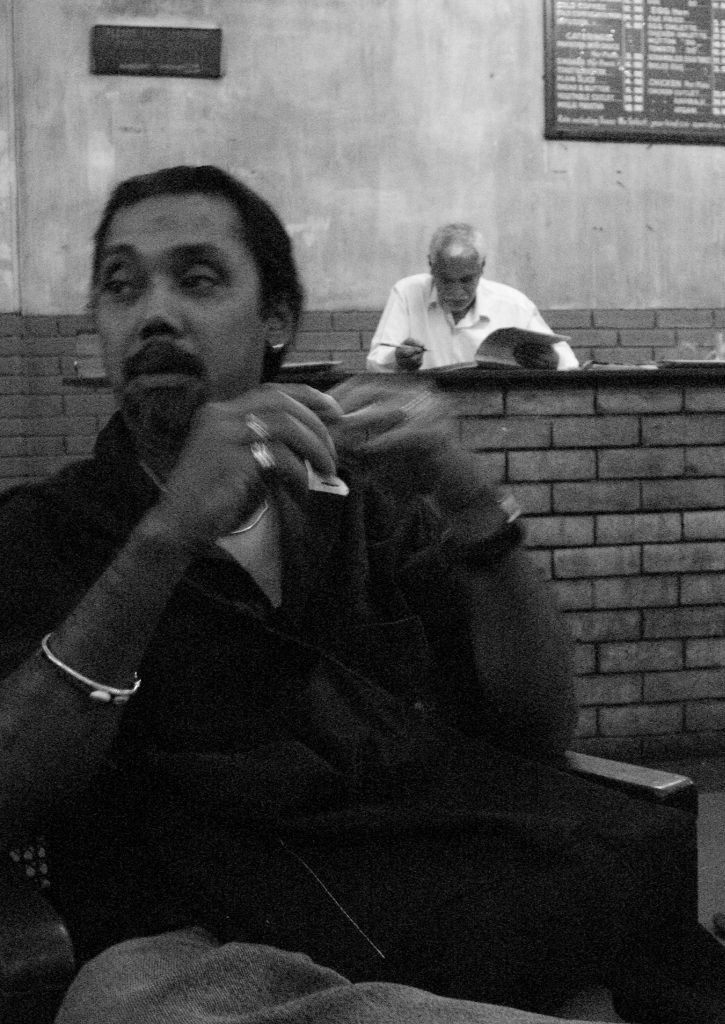

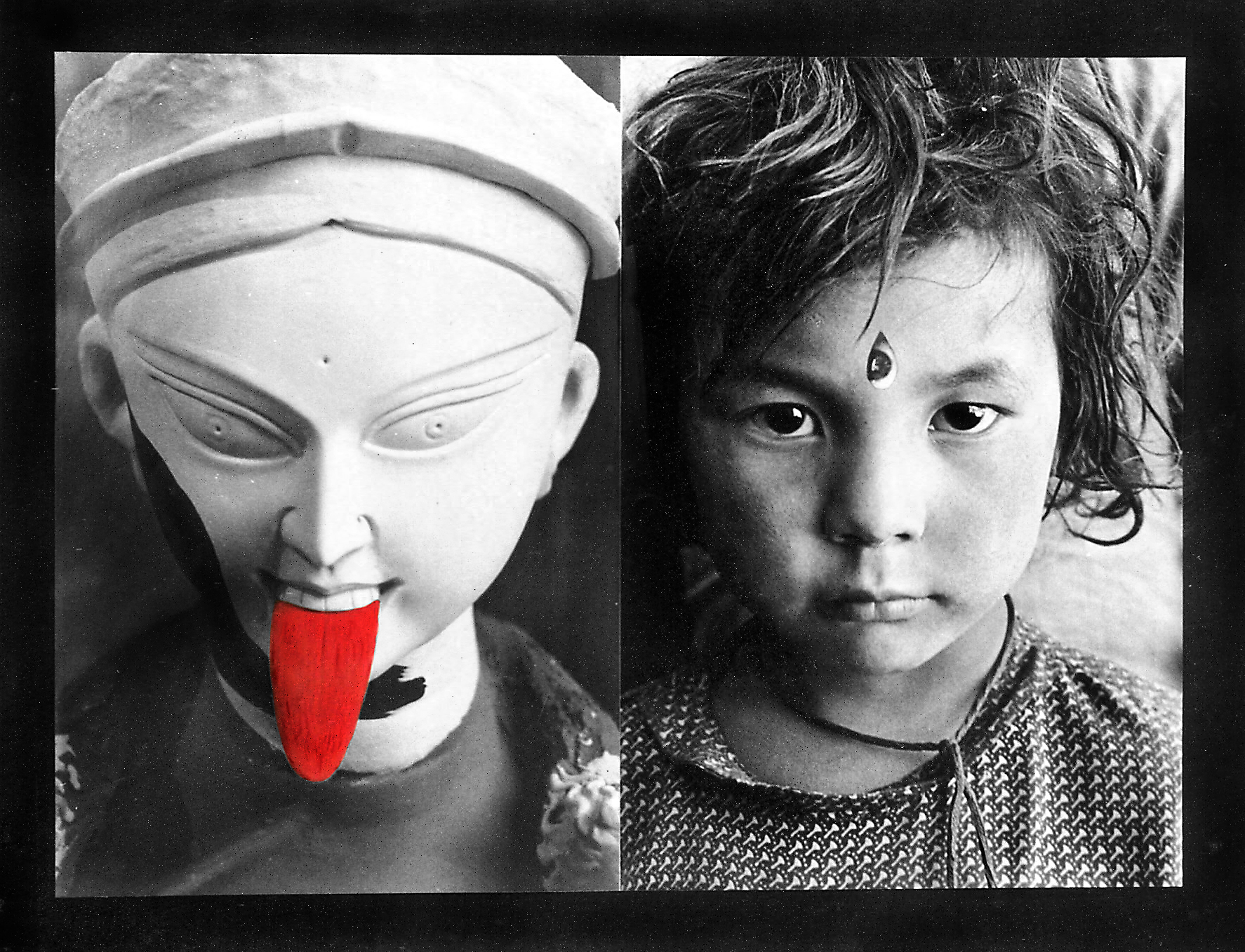
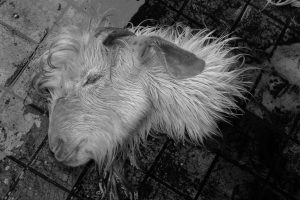
Forgot to mention, photo credits to Santana!
Beautiful post. Look forward to more.
All photos are his…this is his photo essay, narrated by me. Or are you talking about the last photo …which is Santanu in the coffee house? Let me know if you took that photo, I will surely update the post.
https://waterfallmagazine.com
I’ve read several just right stuff here. Certainly value bookmarking for revisiting.
I wonder how much effort you set to make this
type of excellent informative website.
I have spent a lifetime researching and writing for documentaries, and I am a field person as well since I am there personally in many of the shoots – so a certain amount of effort comes naturally to anything I do. Thanks for liking it.